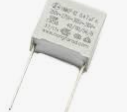Capacitors, integral in electronic circuit design, store and release electric charge with a finesse that's critical. Particularly under special conditions, designers opt for connecting multiple capacitors in parallel, boosting total capacitance. Yet, this strategy harbors risks. Cook & Cooper, a leading capacitor manufacturer, guides firms through parallel connection protocols, safeguarding circuit stability and reliability.

Matching capacitance values with precision is crucial. In a parallel arrangement, the combined capacitance equals the sum of individual values. Discrepancies lead to instability or failure. Therefore, exacting scrutiny in capacitor selection, ensuring uniform specifications, is non-negotiable.
Voltage resistance cannot be overlooked. The weakest link, in terms of voltage resistance among parallel capacitors, dictates the overall threshold. Hence, each capacitor's voltage resistance must be robust, ready for the circuit's peak voltage. A single weak capacitor can spell disaster.
The nuances of capacitor ESR (equivalent series resistance) are pivotal. ESR, or internal resistance, must be aligned among parallel capacitors to maintain circuit harmony. Mismatched ESR values could mean increased current draw for higher resistance capacitors, impairing circuit performance. Prioritizing ESR compatibility is a must.
Size and layout optimization is a delicate dance. With parallel capacitors, spatial considerations grow. Designing a circuit board demands meticulous planning of capacitor size and placement, ensuring efficient use of space and non-interference with other components. This attention to detail can significantly boost circuit reliability and function.
The choice of capacitor connection method is more than just technical; it's strategic. Parallel and common connection methods offer different benefits: parallel ensures equal voltage endurance but may lead to uneven current sharing, while common connection evens out the current but at the cost of unequal voltage distribution. Tailoring the connection approach to specific circuit needs is vital for stable performance.
In conclusion, adhering to these guidelines can prevent pitfalls associated with parallel capacitors and enhance circuit integrity. Careful consideration of capacitor value, voltage capability, ESR matching, spatial design, and connection strategy can profoundly influence the efficacy of capacitors in electronic circuits, unlocking their full potential for companies.
